Methods for attaching the toilet to the floor
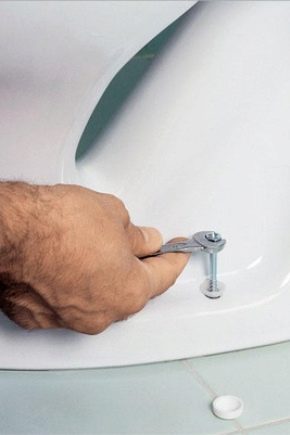
Now it is difficult to imagine a bathroom without this product. You can install the toilet in different ways, for example, on your own or with the help of professionals. It seems to many that such an installation is something complicated and troublesome, which is what service companies use. The cost of work varies depending on the city and the organization itself. Moreover, most of the firms fix the toilet bowls only with standard fasteners. The price for their services starts from 1200 rubles.
Private plumbers or novice craftsmen will offer their services more cheaply. But the quality of work in this case will already be in question. However, if you deal with the materials and the sequence of actions, it turns out that there is nothing complicated here, and you can handle it yourself. And the cost of work will not be high.
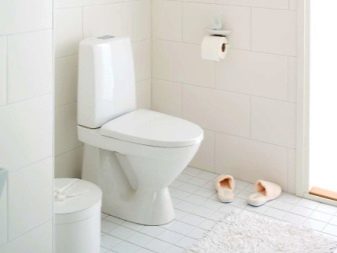
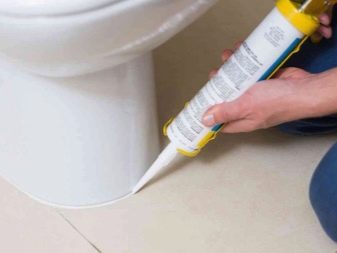
Features of the device
Before proceeding with the direct installation, it is worth getting acquainted with the types of toilets. They can be conditionally divided according to such characteristics as the shape of the tank, the shape of the bowl and the tank, the material of manufacture, as well as the angle of discharge.
Tank shape
- Compact - this species is in the toilet of each of us. It is easy to maintain and flushes water quieter than other types. But it has a small head. The cistern is mounted on a special ledge, with bolts at the back of the toilet and is adjacent to the wall.
- Monoblock - this is a single unit, bowl and cistern. They cannot leak at the joints. But if the tank or bowl is damaged, the device must be replaced completely, because you cannot disassemble them into individual parts. In addition, the model requires more space than a compact or mounted.
- Separated - rarely found in old houses. The barrel is attached almost to the ceiling. Connects to the bowl with a long pipe. This design has a powerful water pressure when draining. Takes up less space due to the high location of the tank. It is still in production, but it costs a lot, because it is sold as an exclusive retro product.
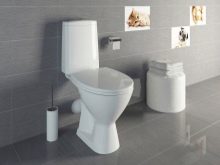
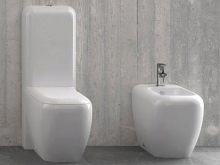
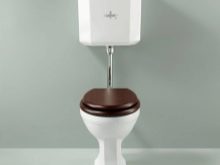
- With a hidden cistern (the bowl itself can be hinged) - the tank is installed inside the wall, and the bowl is outside. The whole structure rests on a metal frame, which is hidden under tiles or drywall. It looks very nice, but difficult to repair. In case of problems with the tank, you will have to break the wall.
However, in small rooms, where every centimeter counts, this type is the best option. Allows you to save a floor measure of space due to a niche in the wall where the tank is hidden.
- Combined with bidet - has a built-in small tap. Different manufacturers offer many shapes and sizes. The installation of such a device will be more difficult than a conventional toilet bowl.

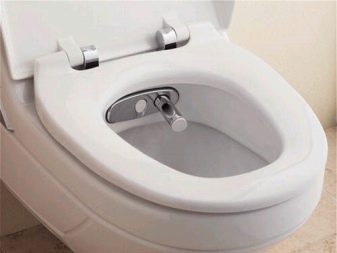
Bowl shape
- Visor - the most commonly used. The water leaves smoothly, at an angle, so unpleasant odors do not linger, as well as the contents. The name comes from the protrusion that prevents the splash of water during flushing, and provides the right slope for flushing from the sides of the toilet.
- Funnel-shaped - there is a funnel in the center of the bowl, which is why the flushing occurs very quickly and thoroughly, but it protects against splashes worse than the visor.
- Poppet - an outdated look that is not currently being produced. Inside the bowl there is a flat shelf for the accumulation of defecation products. Although this design was splash-free, it was cleaned only under running water.Another drawback of the species is the rapid spread of odor.
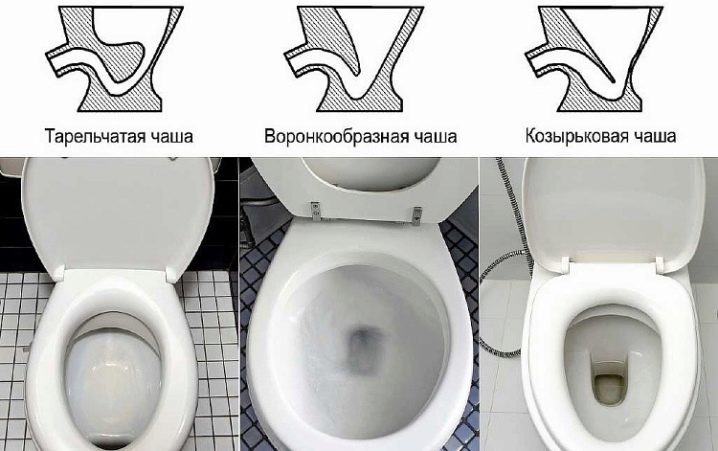
Manufacturing materials
- Faience - affordable. But not durable. It has a porous structure, which makes it difficult to clean. Service life 15 years. Strongly inferior in quality to other materials.
- Porcelain - more expensive than faience, due to production costs, but more reliable and durable. Easy to clean and has a long service life. Nowadays, ceramics are more often used, the short is covered with a thinner layer of glaze, but it is cheaper to manufacture.

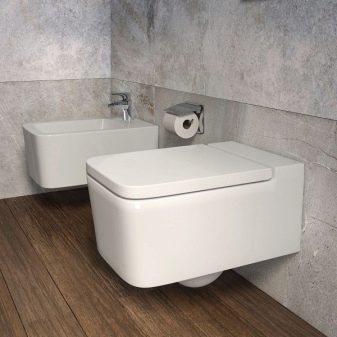
- Steel - such toilets have been seen in train toilets. They are durable and wear-resistant, easy to clean. Not the cheapest for the price.
- Reinforced acrylic - this type consists of plastic, practically without a porous structure, and therefore the most hygienic. But they do not withstand high temperatures and are very fragile. Most often they are located in shopping centers, due to their low cost.
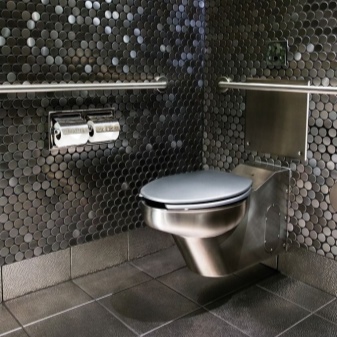
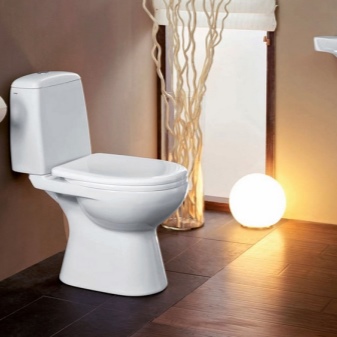
Discharge angle
- Oblique - suitable if the sewer outlet is at floor level or slightly higher. The angle of inclination can be different - 30, 40, 60, 75 degrees. Pick one that fits well.
- Horizontal - convenient if the drain pipe is hidden behind the wall. It is similar if the sewer outlet is 10-15 cm above the floor level.
- Vertical - was common in houses with sewage in the interfloor ceilings. If the sewer outlet is directed upwards and it is hidden in the floor.
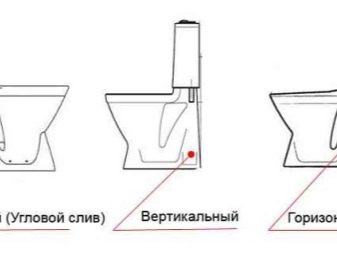
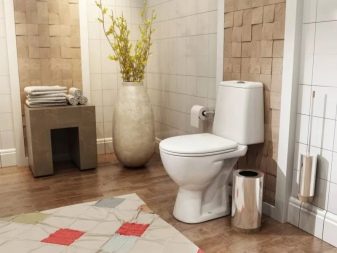
Regardless of how you are going to fix the toilet on the floor, you must first make some preparations:
- Prepare the installation site. Clean and degrease the tiles or dismantle the old toilet and level the surface.
- Assemble the cistern before installing the toilet (touches the compact). Follow the manufacturer's instructions that came with the model.
- If you connect to an old cast iron riser, pre-dry and clean it in order to avoid leakage problems in the future.
- Prepare all tools for assembly and installation in advance.
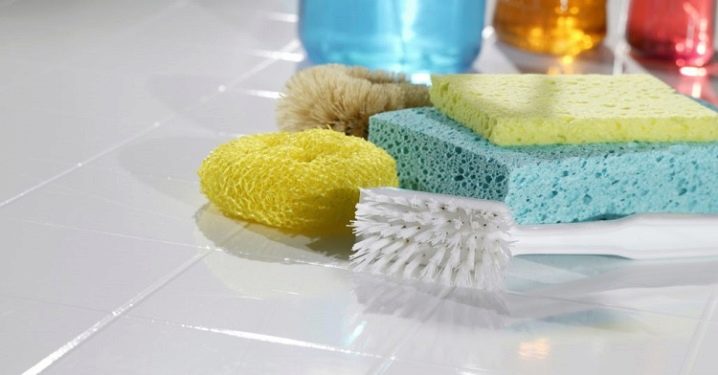
Installation methods
Depending on the materials used, there are such types of installation.
- On standard fasteners. That is, on dowels, they usually come with the purchase of the product. The main difficulty is to tighten the bolts evenly on both sides without overtightening them.
- On the glue. Here we will talk about epoxy resin or sealant. A simple and effective method of bonding to ceramic surfaces. A beginner can also handle it, even if you have a heated floor.
- On cement mortar, or tile adhesive based on it. A significant disadvantage of this method is the difficulty in dismantling the plumbing, for example, when replacing or clogging.
It is difficult to make such fasteners for a wooden covering.
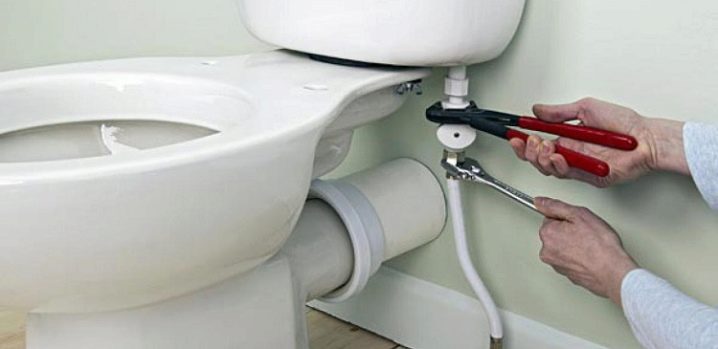
Fastening to standard fasteners
You can glue the toilet to the tiled floor. However, in order to more reliably strengthen the structure, experts recommend additionally using a special screw.
Materials and tools
The standard kit supplied by the manufacturer contains:
- self-tapping screws 2-4 pcs. and plastic dowels;
- washers for laying between the screws and the toilet at the attachment points;
- decorative caps.
You will also need additional tools:
- hammer, marker, pliers and screwdriver, wrenches;
- perforator with a drill for the size of the dowels;
- a drill for a tile is 1-2 mm larger than dowels;
- glue: "liquid nails", silicone sealant, epoxy resin;
- corrugation (if the outlet of the toilet does not coincide with the bell) or cuff (if the outlet is the same).
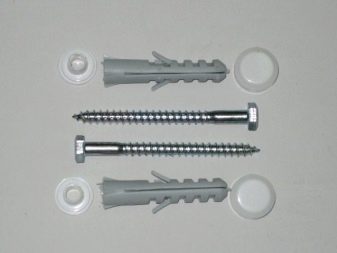
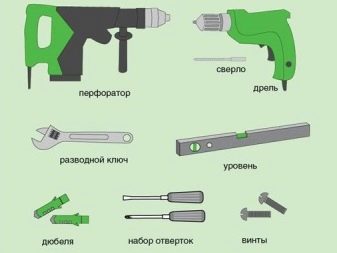
Work order
The installation procedure should be strictly adhered to.
It consists of several stages.
- Place the toilet where it will sit at all times and draw the markings, tracing the outline of the base with a marker on the floor. Draw dots on the fasteners.
- Drill the holes for the dowels on the floor.
- Place the toilet clearly on the lined marking line.
- Check that the holes do not move and drive the dowels into them.
- Apply sealant to the edge of the sewer pipe and insert the collar or corrugation into it.The sealant will protect against odors and leaks.
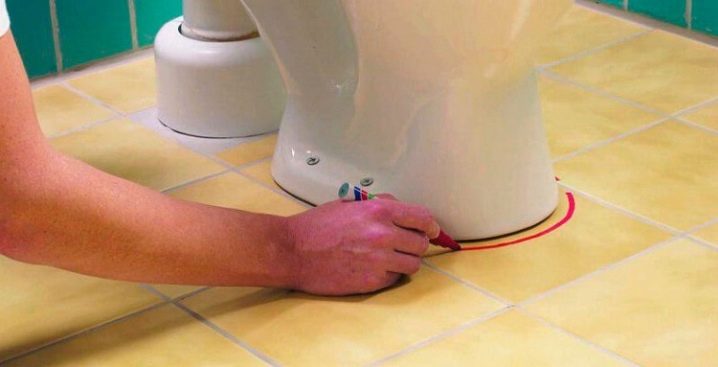
- Screw the toilet on until it stops moving. It is not necessary to overtighten the bolts. Remember to tighten evenly. Be sure to use plastic washers. Without them, metal bolts can chip off pieces of earthenware or even split the base.
- Put the tank down. First, lay a gasket on the toilet shelf, and on top of it install the cistern itself, tightening it to the bolts.
- If the cistern has a separate shelf, do not put its weight on the toilet ears - they are too fragile. Support either underneath or behind, thus distributing its weight.
- To prevent clogging the filter in the tank when you first start the water, first drain a little directly into the toilet through the tube.

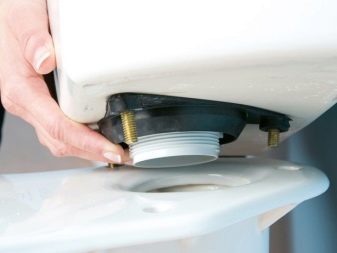
Installation on glue
The two most common adhesives are silicone sealant and epoxy. They are easy to use - you just need to know how to handle the glue gun correctly. This method is easier than bolting. There is no risk of cracking the product when tightening the bolts, or damaging the toilet tile. The toilet bowl installed on glue will definitely not wobble. Side gluing is also possible.
In addition to glue, you also need:
- ammonia;
- tape measure and triangular ruler;
- narrow spatula;
- sandpaper;
- pencil or marker.
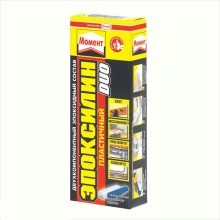
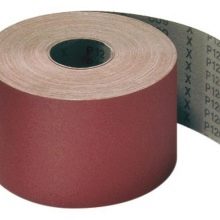
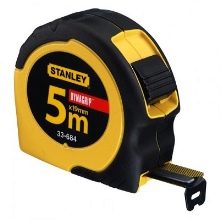
The process of gluing the product to the floor itself is carried out in the following sequence:
- Place the toilet on a piece of cardboard so as not to scratch the tiles and center it with a ruler and tape measure.
- Remove the backing and draw with a pencil or marker.
- Emery paper over the edge of the toilet seat. To align it. This will make the adhesion to the glue more reliable.
- You can also sandpaper the tiles, but here it is important not to go beyond the marking line. Otherwise, there will be traces visible after installation;
- Degrease the surface where you will install the plumbing with alcohol and wipe dry.
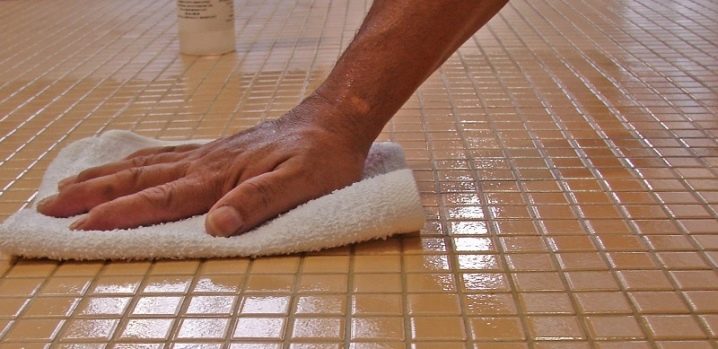
- Gently use a syringe to apply adhesive to the edge of the support. If there is a lot of glue, it will be visible at the edges and stain the tiles, but if they sat down, on the contrary, there is not enough glue, then the toilet will not stand firmly.
- Place the glue-coated toilet in the place of the marking. It is important to place it perfectly precisely so that you do not have to move it to the tiles.
- Spray the floor around the base of the toilet with soapy water to prevent it from sticking to the tiles when removing excess sealant.
- Remove glue residues from the floor with a narrow spatula moistened with the same soapy solution.
- Do not move or touch the toilet for 12-24 hours to allow the glue to dry.
- Install the tank, bring the water supply to it and connect the outlets to the sewer after the adhesive has dried. The final touch will be to attach the cover and seat.
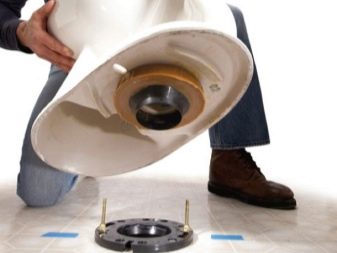
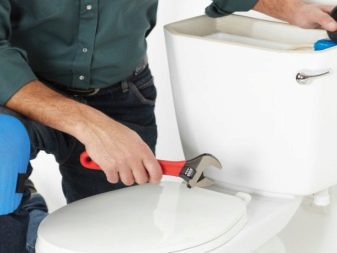
How to fix with cement mortar?
This method is convenient if the new toilet is installed in place of the dismantled old one. Or if there are no other tools and glue at home to put the product differently. Instead of cement mortar, you can use ready-made tile adhesive based on it. Such a tool is universal and can be used to attach many structures in the bathroom, for example, a shower block.
You will need tools:
- narrow and medium spatulas;
- building level;
- hammer;
- chisel;
- concrete solution;
- masking tape.
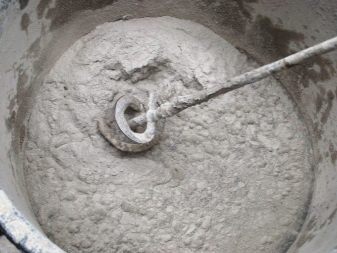
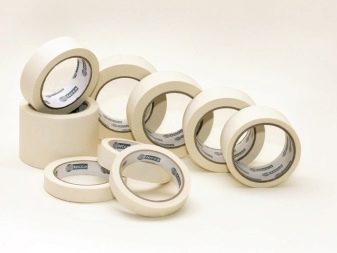
Installation is carried out in strict sequence.
- Place the toilet where it will stand permanently. Check that all structural elements fit together.
- Use a marker to trace the base of the toilet leg and move it to the side.
- Along the marker line, use a chisel and hammer to cut the tiles on the tile. Be careful not to split the tiles. Protect your eyes from debris and dust with special glasses.
- Instead of notches, you can stick masking tape over the outlined line. It is important that it does not go beyond the edges of the contour. Its rough surface will also adhere well to cement.
- Dilute sand and cement in a 2: 1 ratio. If there is no sand, then you can just do with cement.Tile glue will require 3-4 kg, it will be more convenient than cement - more quickly effective and has a convenient powder form, compared to concrete, which may contain large fractions of sand.
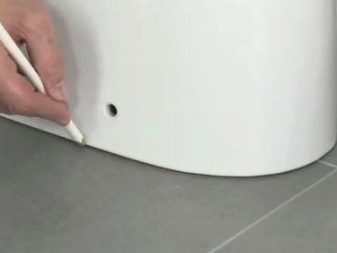

- Wet the tiles before gluing. Then, without going beyond the border of the markup, apply an adhesive solution.
- Moisten the bottom of the toilet leg as well. Prepare two plastic pads 5-7 mm thick and 50-80 mm wide. They should be placed on the front and back of the base to create a “cushion” between the toilet and the tiles. When placing the toilet, level it exactly to avoid distortion.
- Use a trowel to scoop up any excess cement that has protruded from the edges and smooth out the joint. The gaskets can be removed only after complete drying, and the holes from them are filled and aligned. If you glued on a cement mortar, then it should dry for 3-4 days. You cannot use the toilet at this time. The drying time of the cement glue is written on the packaging.
If you do not deviate from this algorithm, the quality of work will be at its best.

Important nuances
When installing the toilet in a new place, you should take into account the distance from it to the entrance to the bathroom. The ideal distance from the door is 50 cm or more.
Do not use the hammer mode when drilling tiles. This material can only be drilled at low speeds, periodically cooling the drill and the hole itself with water. Otherwise, the die will crack.
The drain connection must be easily accessible. In this case, it is important to make sure that it does not swing, that there are no defects in it. The cold water supply should be carried out unhindered, with one hose.
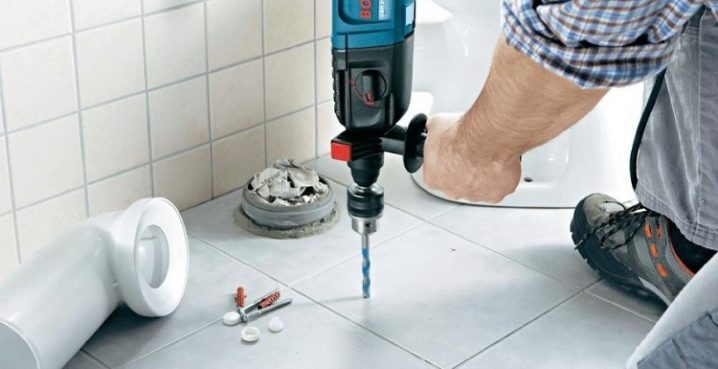
When planning a place for a toilet, it is important not to forget about the cistern. It should fit perfectly flat. "Try on" the cistern on the toilet to understand how much space it will take up, and whether it will be convenient to carry out plumbing work in the room later in the event of repairs. You need to check the ratio of the fasteners of both parts to each other and see if they are broken.
At the end of the installation of the toilet bowl and cistern, a test flush of water should be done. If there are no leaks and the toilet is not dangling, you can safely use it.
In the next video, you will find instructions for installing a toilet using the example of a model from Ideal Standard.













The comment was sent successfully.